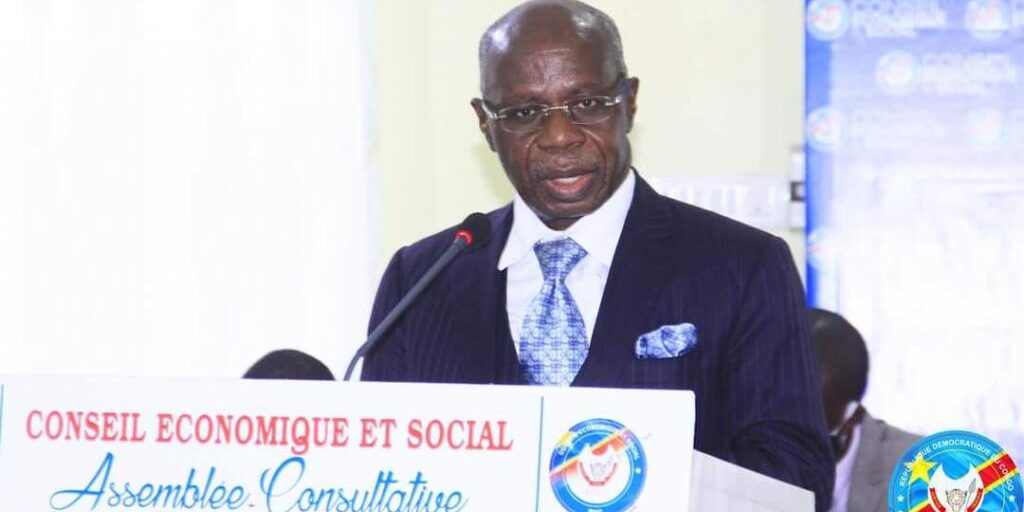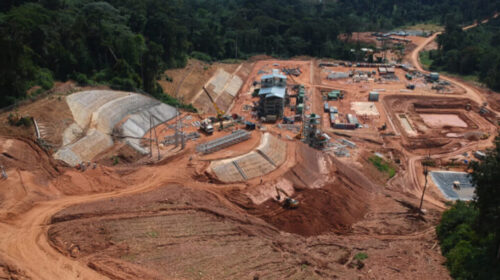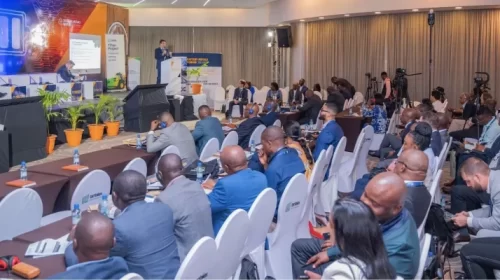Albert Yuma pinpoints 5 causes of low mining revenues in DRC
The Democratic Republic of the Congo, although endowed with immense mineral resources which make it a geological scandal, is poor, like its population who live on less than US $ 500 per year per person.
If the mining sector made a strong contribution to national income between 1965 and 1990, it can be observed that over the past thirty years, mines have not been able to lift the DRC out of poverty. Albert Yuma, president of the Fédération des entreprises du Congo (FEC) and chairman of the Board of Directors of Gécamines, pinpoints 5 major causes that make the DRC fail to draw sufficient financial resources from the mining sector.
In a presentation entitled “The Stakes of the Revised Mining Code” presented during an academic session at the Economic and Social Council (CES) on Monday, May 3, Albert Yuma went back to the recent history of the DRC before the 2000s. to find an explanation for the low mining revenues in the DRC. He points the finger at both the World Bank which imposed the 2002 mining code and the multinationals which dispossessed Gécamines of more than 50 million tonnes of minerals through unbalanced joint ventures.
He cites these 5 following causes:
1. The organizational disintegration of portfolio companies
My remarks will start at the beginning, that is to say the beginning of the 1990s, during which all public enterprises in the mining sector in the Democratic Republic of the Congo, were confronted with difficulties of a technical and financial nature relating in particular to the aging of their production tool, in a social climate that is also marked by instability. All these companies, in parallel with the difficulties that the country experienced from the beginning of the 90s, experienced a slow degradation of their production tool., Some did not survive like SOMINKI, which became SAKIMA, then SOMICO which disappeared in 1998. .
On this specific point, I would like to point out that GECAMINES is today an exception among these different companies. Indeed, despite the intense economic, financial, industrial and social difficulties encountered from the beginning of the 1990s and the collapse of the KAMOTO mine, the desire to revive the cobalt-copper mining sector advocated by international partners and the Bank Global from the early 2000s resulted in an attempt to restructure the company by SOFRECO – with funding from the World Bank.
2. Looting and then legalization of the transfer of mining heritage from the State to private operators
The second cause of the situation we know today is linked to the transfer of our natural resources, during the two wars which bloodied our country and which were used to finance them or to pay the belligerents. As we unfortunately all know here, our country was literally looted between 1998 and 2001 for more than 10 billion dollars according to the UN, a situation which continued between 2001 and 2003 in particular and which continued until 2006, under a another form – more civilized but just as brutal, of transmission of shares between those who had inherited assets in the previous period and investors happy to acquire international assets under very advantageous conditions, a fortiori in a now peaceful country.
In any case, the result was particularly edifying in terms of loss of assets for the State. By way of example, GECAMINES has seen its heritage melt “legally” if you allow me the expression, of 40 million tonnes of copper, 4.5 million tonnes of cobalt and 4.3 million tonnes of zinc which have been transferred to Joint Ventures.
3. The 2002 mining code: too favorable to investors
The third reason for this inadequacy of financial resources for the exploitation of the country’s mining resources is the 2002 legislation. In order to promote the attractiveness of the country, justified by the need to help it rebuild, the World Bank supported the DRC in the revision of its mining legislation and favored – or even imposed – the adoption of the mining code of 2002 which was, from its adoption, very quickly considered very favorable to the investors.
So if the DRC were content to be only in the world average of what the States perceive as a percentage of income from their natural resources, instead of the 1.4 billion dollars of mining revenues as provided for in the budget of the STATE revenue for 2021, these should be at least 3.5 billion.
4. The transfer of mining assets to investors through unbalanced contracts
A fourth reason for this lack of revenue is also linked to the contracts that were entered into at that time between the portfolio companies and the new holders of the securities. To justify the transfers of mining titles to the benefit of foreign entities without any real consideration other than a commitment to invest in the project – that is to say to bring the financing -, the JVs that were created were created to the detriment of the State company GECAMINES and therefore of the State. This was also the case for OKIMO with the joint venture with Randgold.
This point was known from the start. A famous law firm which had to analyze certain contracts at the beginning of the 2000s declared clearly: “it is highly probable that GECAMINES bears all the risks and that it does not receive any dividend in remuneration of its capital contribution. social before its private partners have been fully reimbursed for their loans, capital and interest ”.
Their anticipation has caught up with reality, on the day I speak to you, Boss Mining, KCC, TFM, RUASHI, have never paid a single dollar in dividends to GECAMINES because they continue to repay themselves first, when, moreover, they do not. not just make losses. It is even GECAMINES which owes them money for having had to borrow from them its share of the share capital in the company, while having brought the mining title which is not even valued.
5. The missed opportunity of revisiting
The 5th reason, is not one, it rather falls under the register of the missed opportunity. In fact, in 2007, barely a few years after the conclusion of these partnerships, the Congolese authorities noted that the mineral wealth of the Democratic Republic of Congo developed through these partnerships only contributed or would only contribute. limited contribution to the development of the country. At the initiative of Parliament, the so-called Lutundula Commission, responsible for examining partnership contracts concluded with private investors in the mining sector, as well as their impact on national development, was set up.
We all know today that the revisitation produced no lasting results, but only “illusory and ephemeral” with the exception of the increase of certain doorsteps and a few tenths of royalties in addition which did not change anything at the time. general economy of contracts and therefore their imbalances.
57 total views , 2 views today





